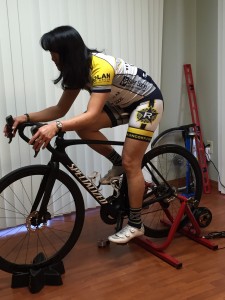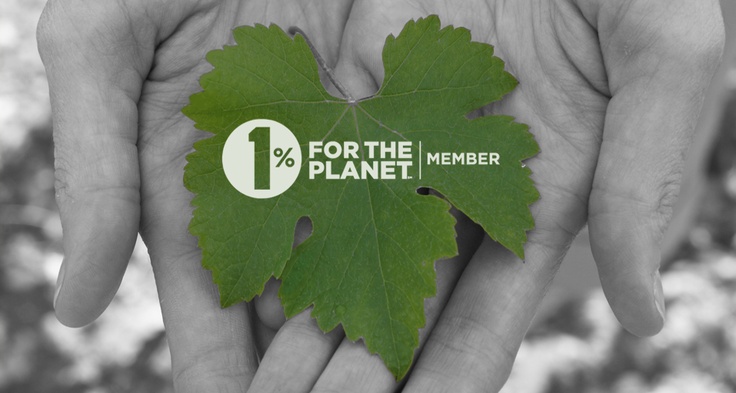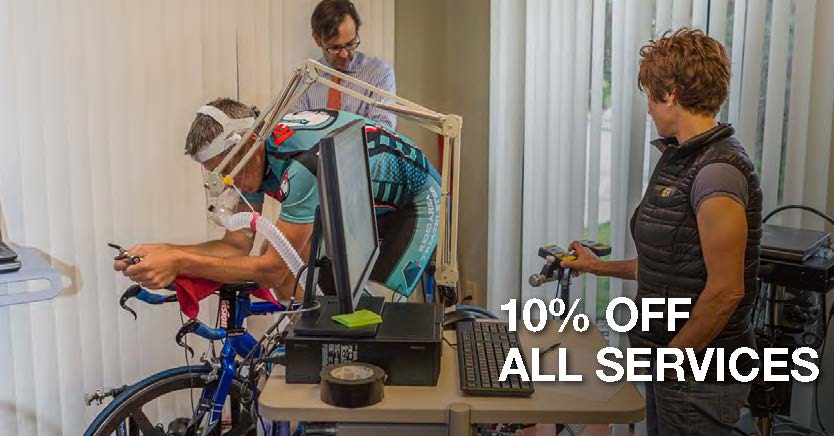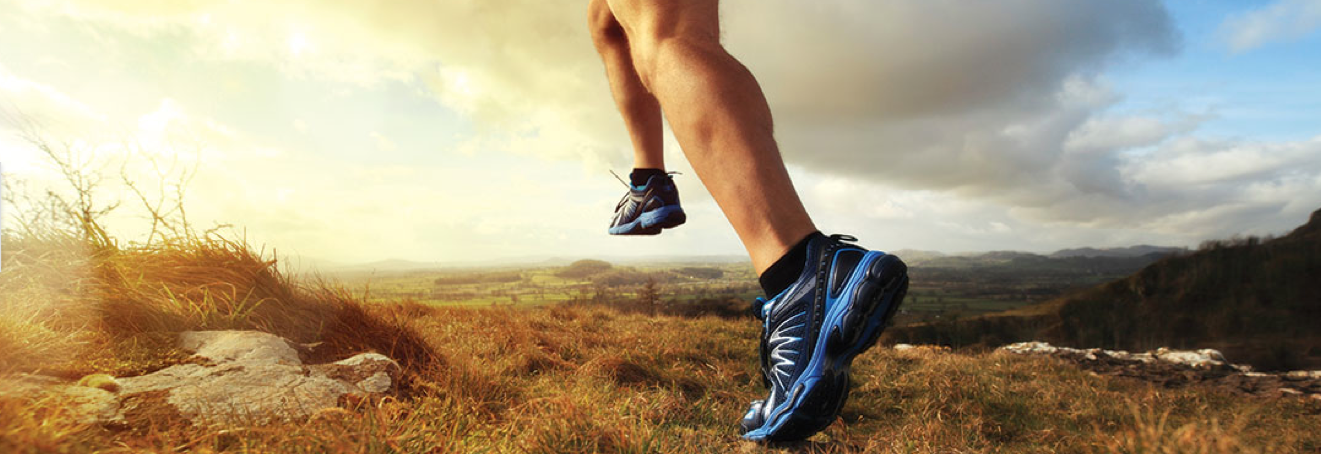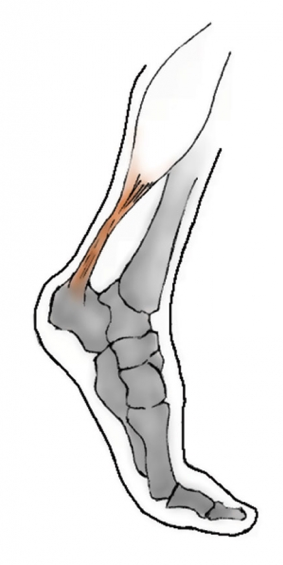The worst non-lethal injury known to the long distance runner, the despoiler of the best laid exercise plan, is a rupture of the thick white cable extending from calf to heel, known as the Achilles tendon. Runners can exert upwards of 16,000 pounds per square inch on the Achilles, but it only takes 14,500 PSI for an Achilles to snap, and much less to cause tendonitis, according to a 2008 study; thus, the Achilles is arguably the most vulnerable connective tissue in the runner’s body. I knew this, of course—every runner does—but perhaps lulled by feel-good hormones coursing through my brain every time I ran, I ignored those telltale catches in my gait, and was only jerked out of denial when my right heel locked up and a robin’s egg-sized lump protruded from the sheath. When it did, I realized I had not only bollixed my chance for athletic glory, but also dropped the ball on a mid-life makeover, an attempt to prolong the life of a middle-aged man whose family crest bore a garland of clogged arteries surrounding a tureen of Hollandaise sauce.
How could this setback—in my case, the dreaded Achilles tendonitis—happen now, in the midst of a return to former svelte athletic prowess? I considered blaming my doctor, the preternaturally agreeable Andy Pasternak; my partner, the insightful and optimistic Jane Grossman; my coach, the wise and compassionate Julie Young. All were above reproach. It was nobody’s fault but mine. Indeed, Young designed the perfect exercise program, which, if I had followed it, would have saved me money, pain, shame and this very public apologia regarding my failure to complete what would have been a glorious thing indeed: an autumnal circumnavigation by foot, cycle and paddle of the inland sea to which this publication owes its name.

Julie Young, Owner/Head Coach at o2fitness Coaching and Training
Director, Silver Sage Sports & Fitness Lab
www.o2fitness.net
I embarked on a Fitness 5.2 project at the beginning of 2014 and I had begged Pasternak and Young’s help. Why? The problem, as I saw it, was I was flirting with death. I sat too much. My family tree looked more like a shrub when it came to my male progenitors; none lived long enough to collect Medicare.
My father died at 44. Paternal forefathers passed in their early 60s. My younger brother endured quadruple bypass surgery in his early 40s.
Not an auspicious gene pool.
Somehow dodging a bullet thus far, but not wanting to drop dead in the middle of a whimsical run around the local trail system, I figured I needed more than a standup desk to nudge me past 75, the average life expectancy of a Caucasian U.S. male. Not only would I have my comeback, I’d gild the effort with the circumnavigation of The Lake.
So I spoke with Pasternak, who is accustomed to me shambling into his medical practice with all manner of phantom pains, along with theories about their root cause based on Internet research. Certain members of Pasternak’s staff took to asking me, “You, again?”
“Sure, we can help you out,” said Pasternak when I asked about the sports fitness side of his practice.

Andy Pasternak, MD, MS
Silver Sage Center for Family Medicine
Silver Sage Sports and Fitness Lab
So he and Young, who is the director of Silver Sage Sports and Fitness Lab, took me by my atrophying arms and thickening midriff and led me into an adjoining room.
Pasternak produced both tape measure and calipers, and pinched and prodded both my muffin top and the fleshy spheroids I once called my chest, and produced metrics proving I was in as crapulous a state as I thought. Young designed an exercise plan to whittle me from flabulous into a lean fighting tiger by revivifying a heart muscle that needed more stimulation than it was getting scribbling essays for school and work.
“I mainly want to experience that wonderful feeling from the old days, of moving like a kind of machine for miles,” I wrote Young a week before she devised the plan. The machine, I knew, long since surpassed its warranty, but I aspired to longevity, and indeed, greatness, nonetheless.
Young subjected me to a series of humiliating tests. First, she strapped a mask resembling the creature from Alien to my mouth—remember the face hugger that deposits eggs into the unfortunate John Hurt character’s gut? This test measured my basal metabolic rate and determined how many vittles I would be allowed to eat to maintain fitness and to shed pounds. She asked me to perform one-legged squats and balance drills and various stretches proving I was
1) weak of hip; 2) soft of core; 3) limber as a 5-foot-9-inch length of number 18 rebar.
She used a goniometer to fit me to my road bike, and she used Dartfish video to help straighten my running gait. Young is a retired cycling goddess, one of this country’s best international riders of the 1990s, and she still stomps in regional endurance races. A full-time coach for the past 12 years, she’s known to be firm but flexible, as interested in mind as body. As I knelt on the floor of Pasternak’s office one day, an outsize rubber band looped around my knees, performing a dog-like move called the Fire Hydrant, I had plenty of time to admire Young’s own shapely and well-muscled gams; compared to hers, mine resembled those of a Modern Game fowl.
At first I carefully followed Young’s training regime, which appeared each evening in my inbox and consisted mainly of road and mountain bike riding and running, and a series of exercises meant to strengthen my core and hips. These floor routines seemed to be quaint “nice to haves,” not “need to haves,” so time-constrained as I was, I ignored them. Here’s where the soundtrack to the film version of this story shifts from major to minor key, but I’ve already made clear where this narrative is heading. Regardless, I knew my body responded well to training loads. I told her to bring it on, and before long I was heading out the door almost every day. I hadn’t run regularly in a few years, so Young mapped slow and steady 45-minute trail runs in 3-2 intervals; three minutes walking and two minutes running. Within a few weeks we increased those sessions to an hour.
“Brad, you really should be working on those hip stabilization exercises,” Young told me during a check-in chat, her chipper, can-do soprano tinged with a bit of concern. “You’ll be happy you did in the long run.”
“OK, Julie! I will,” I said, trying to match her buoyancy, imbued with the best of intentions and a desire to make her proud. But every few weeks when Young and I checked in, I’d have to admit that I hadn’t. I also played catch-up on Saturdays and Sundays, going longer to make up for missed workouts during the week.
“Just take it easy,” said Young, advising me to stick with the day-to-day program. “We’re going for lifetime wellness here.” But those long days felt good, and the running felt better than the cycling, liberating even, bereft of the flashy kit and spare tubes and helmet and the company of amateurs who fretted about their body weight like Georgia debutantes. Running was so utterly stripped to its core, a sandblaster for the soul, and I wanted to revisit the 90-mile weeks I enjoyed in my youth. I watched On the Edge, a film from the last century about an over-the-hill and once-disgraced distance runner played by Bruce Dern who returns to his home in Sausalito to race the Cielo-Sea, a fictionalized version of the Dipsea. The runner, Wes Holman, persuades his old coach to help him win the race. “I’m gonna take your bloated carcass and teach you how to become a mountain racer,” the coach, Elmo, played by John Marley, tells him. Running made my body hurt so good, and the miles indeed cleaved the jigglies from my torso.
Of course, well before my fall from my athletic state of grace, I started thinking about jettisoning bike and boat and circumambulating The Lake via the Tahoe Rim Trail. I figured I’d don a Go-Pro, drum up sponsors and wear their patches, tweet and Facebook my progress from the field. So I happily practiced by downing Nature’s Bakery’s fig bars and Clif Shots as I sidestepped Young’s recipe and upped my hour-long runs to nearly three. And that’s when the damnable arrow, the runner’s bane, found my Achilles.
I called Andy Pasternak’s South Reno medical office in a state of near panic. I was several weeks away from driving to Vermont for a gig at a climbing magazine, and I needed a remedy  ASAP. I was referred to a physical therapist whose ministrations included wretch-inducing cross-fiber massage and electro-stimulation, the latter of which made my toes twitch like a machine-gunned mobster—and this at $200 a throw. Those nostrums did nothing to repair the tendon in the short term. The therapist recommended I curb my athletic ambitions. She diagnosed weak hips, and prescribed the same floor routines Young wrote into the plan, which she had insisted were critical to my middle-aged fitness. I felt wretched and guilty as I drove across the country with an Achilles aching each time I depressed the gas pedal. When I reached my editorial residency in the Green Mountains, I admitted to Young what I did, and braced myself. But instead of shaming me with invective and giving me the boot, she rolled with it.
ASAP. I was referred to a physical therapist whose ministrations included wretch-inducing cross-fiber massage and electro-stimulation, the latter of which made my toes twitch like a machine-gunned mobster—and this at $200 a throw. Those nostrums did nothing to repair the tendon in the short term. The therapist recommended I curb my athletic ambitions. She diagnosed weak hips, and prescribed the same floor routines Young wrote into the plan, which she had insisted were critical to my middle-aged fitness. I felt wretched and guilty as I drove across the country with an Achilles aching each time I depressed the gas pedal. When I reached my editorial residency in the Green Mountains, I admitted to Young what I did, and braced myself. But instead of shaming me with invective and giving me the boot, she rolled with it.
“Brad, what we’re doing here is laying the foundation for a lifetime of fitness,” she said, and she calmly recalibrated the plan. So rather than run roughshod on the Long Trail over Mt. Mansfield, I noodled my road bike between the Upper and Lower Pleasant Valley roads, drove to Mt. Washington to climb its moderate Henderson Ridge and slowly roller skied past verdant fields of happy heifers whose milk would go into Ben and Jerry’s Chunky Monkey. As I began putting less pressure on myself, and experienced more joy in the workouts I performed pain-free, I realized my tendon-sprung project hadn’t much altered the warming climate or slowed the universe’s rate of expansion. Even Jane said she still loved me. My ankle pained me, but truthfully, all was well with the world. In a way, my strained Achilles was a signifier of ambition, of overshoot. I didn’t need to run around The Lake or train like an athlete to live a longer life; all I really had to do was move my body.
In No Sweat: How the Simple Science of Motivation Can Bring You a Lifetime of Fitness, the University of Michigan’s Michelle Segar, a coach and kinesiology expert with a doctorate in behavioral psychology, makes the startlingly simple research-backed proposition that we doom ourselves to failure when we launch diets and exercise routines with the “wrong whys:” dropping x number of pounds, exercising for x number of hours or miles per week, decreasing cholesterol by x number of points or losing x number of inches off of one’s body; these metric-oriented goals are freighted with must-do obligatory angst, and most aspirants quit within six months of starting a program. Focusing on weight, mileage, actuarial tables and The Lake’s perimeter were more sticks than carrots, promoting episodic fitness rather than a lifetime of wellness. Young attempted to set me straight, but I’d deluged a noble urge with these extrinsic goals and drenched the whole business in glorified treacle. I emailed these thoughts to Young, along with the apothegm that “The journey is the destination.”
“I agree wholeheartedly,” she wrote back. “And you sing to the choir. This is my mission statement, even with hard-core endurance athletes: less performed with purpose and intention is more. The whole goal is to provide more balance to a demanding life.”
It occurs to me that this story of my inflamed Achilles is neither apologia nor elegy as much as it is an ode to wellness. Fitness really is about the journey; the destination, after all, we already know.
Now, Jane reminds me that it’s time to hike Galena’s trails. And so I go.
This article originally appeared in Tahoe Quarterly, Best of Tahoe 2015/May 2015. Reprinted with permission.
Contributing editor Brad Rassler is a Reno-based writer whose stories have appeared in Alpinist and Ascent. Find more of his work at www.sustainableplay.com.

